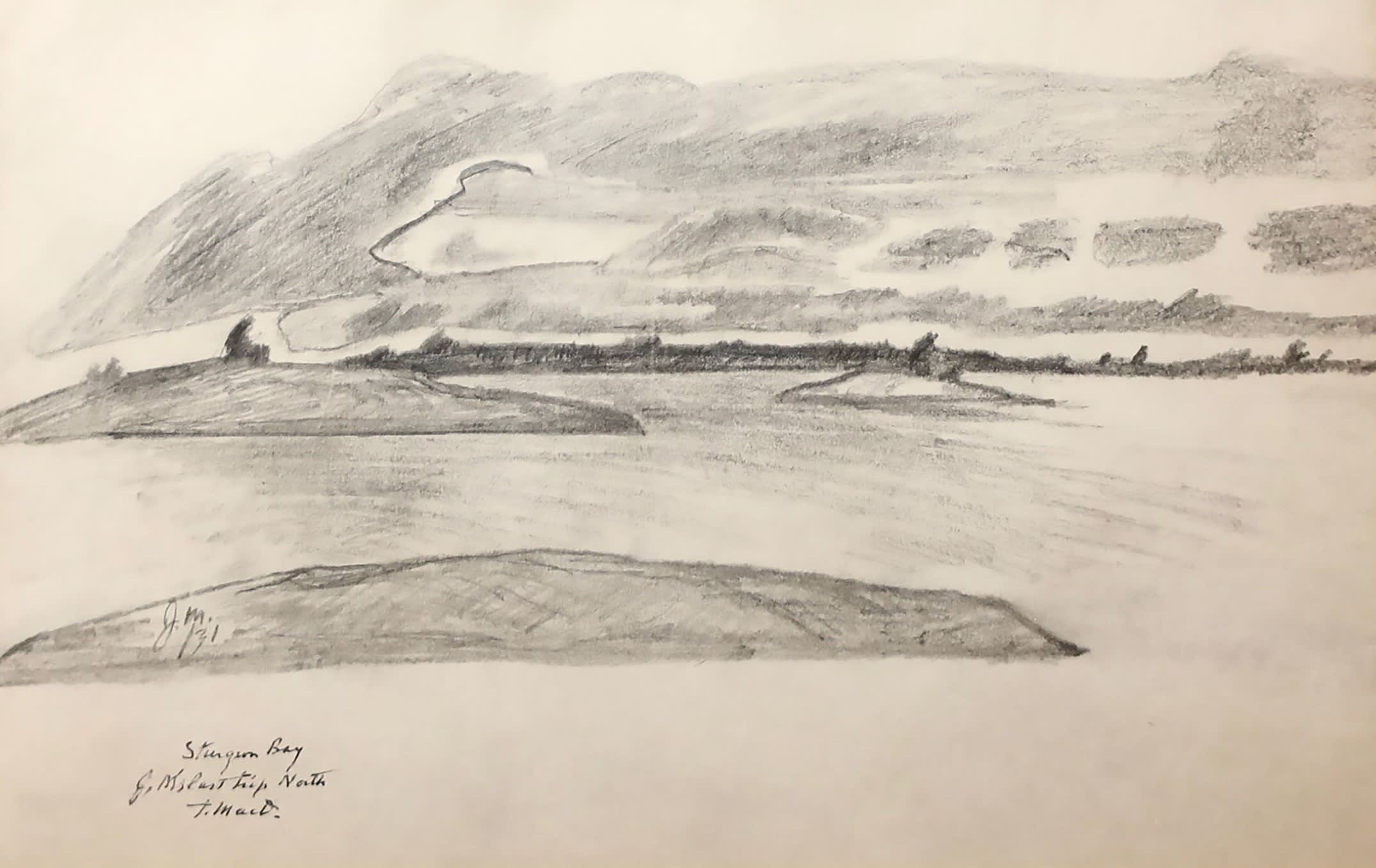“Mr. MacDonald points out the fact that the function of the artist is to see, the first duty of the critic is to understand what the artist saw. He quotes Goethe, who says that “A genuine work of art usually displeases at first sight, as it suggests a deficiency in the spectator.”
Letter to the Toronto Globe, March 27, 1916

JEH MacDonald; Artist and Easel, 1913
While pursuing his artistic education, MacDonald worked as a graphic designer for the firm Grip before fully dedicating himself to painting in 1911. In the early 1900s, he began his painting career and joined the Toronto-based Arts and Letters Club. Along with six other artists, he formed the Group of Seven in 1920, which aimed to promote a distinctly Canadian style of art. MacDonald's paintings, primarily in oil, are characterized by an impressionistic style with bold colours, strong lines, and a profound connection to the Canadian wilderness.

JEH MacDonald; Roches Point, Lake Simcoe, 1920
MacDonald served as the Principal of the Ontario College of Art from 1929 to 1932. Throughout his life, he continued to paint and exhibit his work, playing a crucial role in establishing the Canadian Society of Painters in Water Colour. His professional associations included memberships in the Royal Canadian Academy of Arts (RCA), the Ontario Society of Artists (OSA), and other significant organizations. MacDonald's work featured in numerous exhibitions, including those at the RCA from 1909 to 1932, and his art is held in collections at major institutions like the Art Gallery of Ontario (AGO) and the National Gallery of Canada (NGC).

JEH MacDonald; Sturgeon Bay, 1931
Tragically, after a final trip to the north in 1931, J.E.H MacDonald suffered a stroke. He travelled to Bermuda to recuperate but passed away at the young age of 59 on November 26, 1932, in Toronto. His death led to the disbandment of the Group of Seven. However, his artistic legacy continues, notably through his son, Thoreau MacDonald, a respected artist and illustrator in his own right.



